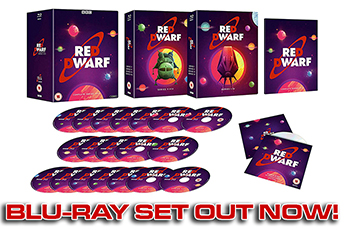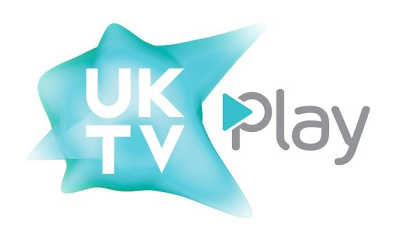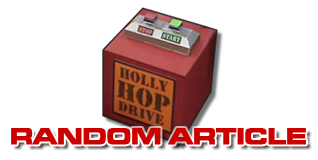 |
Flibble Double In our very first interview since the Red Dwarf movie's first crew members were announced, movie storyboard artist Jim Cornish lets lose on his time in the movies with the penguin who, sadly, is still angling for a film role. |

Andrew Ellard
Mr Flibble asked Jim if he had any sway over movie casting. Jim said that sadly he doesn't. Mr Flibble went into a sulk, leaving Andrew to ask: How did you get into being an ARTIST?
It's just something that has been fairly natural. I wouldn't say I'm the most natural - I have to work at it. There's a lot of people like Mike Ploog who just draw like it's going out of fashion! I don't do that, I have to work it, but it's something that I always seem to have been able to do, to a degree.
Did you start young?
I've always been able to do it. I don't know why or how. All through school, O-level, A-level, degree and post-grad. After my A-levels I did a foundation course, which gives you a background in art history - different styles, different techniques, different media; printing, textiles, everything like that. I then did a BA Honours degree in graphic design and illustration at North Staffs college - they're all universities now because they've upgraded them but they were colleges when I was doing it.
I went from there to helping to set up an animation studio - a lot of paint and trace, with a view to doing more designing for the cell animation. We used to shoot the footage for the animation at the Film and Television school where the animator was based, so that was kind of how I got into film. I decided that was what I wanted to do, so I took six months out, drew up a portfolio, and applied to Kingston - their post-grad course. I studied film and television there.
They had various visiting lecturers, one of which was Bill [Pearson - RD effects wizard]. Thankfully I passed the course. Although it's a bit like learning to drive a car - all it allows you to do is legally drive on the road. The course was exactly the same - all it allows you to do is approach people [complete] with a background. You've then [still] got to go out and learn how to work in the industry.
I got picked up by a company run by another of the visiting lecturers and did a bit of art direction. Then I got a phone call to ask if I could do some storyboards.
What were they for?
They were for a film called Queen of Clubs, which was a young director, first film, a 20 minute short. Apparently it did get made, but I never knew it. They'd shoved me out the door long before that!
Do you feel the art department - especially storyboard artists - are marginalised?
No, not at all. In many respects - not all respects, but especially now when there are more and more computer effects requirements - they're becoming more and more integral to more and more films.
Mr Flibble asked if Jim could, at least, drop in a word with Doug about a penguin cameo in the movie. Andrew changed the topic to Jim's work on LOST IN SPACE...
I was involved in that for only five weeks. The sequence I did was the end sequence, where the planet implodes. I did about four different endings for the sequence over five weeks so they could work out what it was. In actual fact, it must have been redrawn - but [the film] follows pretty closely the original board that I did.
What were the differences in the versions you worked on?
Simple things. Right at the beginning of the film they didn't know what effect was happening to the planet. So when we pull back to reveal the planet, does the planet explode? Does it implode? Does the vehicle end up travelling left to right? Does it end up travelling right to left? So it was variations.
Was the film already cast when you arrived?
I think it had just got cast. William Hurt was definitely in it by that time, and the female lead [Mimi Rogers] had been cast.
Do you try to include the actor's features in the storyboards?
I tend not to - probably because I'm not very good at getting a likeness on a consistent basis. If you're drawing four, five, six hundred - or, on the last thing I worked on, we worked out we'd done 5,000 frames - after a while you kind of slip into a groove. But I'm not the best at doing likenesses.
You do get better at it, but at the same time there are people who have a background in comic book illustration who are well-practised in that art. [Storyboarding] is a tool to show you what's happening, not necessarily to show you a likeness of every person.
You worked on John Badham movie INCOGNITO...
It was actually a Peter Weller movie when I worked on it. He was dropped from the movie after the first week of shooting as a director - it was his first feature film. All the stuff that I boarded was done with Peter Weller. That was ten weeks boarding it - I left a week prior to him.
I've never seen the movie, so I don't know what it's like. [Peter Weller] was great to work with. I was nervous - perhaps that's not quite the right word - of working with him because I'd never met him before. But once I'd got to know him, he was great to work with, I thoroughly enjoyed working with him. He's a very larger than life character, but a very intelligent man.
He was quite visual. I would spend days at a time with him. Literally for the first four weeks all I did was make notes, going all the way through the script and play-acting scenes. Drawing thumbnail after thumbnail after thumbnail. At the end of four weeks I had two or three books of drawn script, that I then drew up.
It was an interesting way of working. I think it was because he was a first-time director that he wanted everything boarding. There were only a few fight sequences and a couple of stunts that really needed boarding - the rest you could have done, by and large, on the day with a shot list.
Andrew caught Mr Flibble adding a small penguin to the background of one of Jim's storyboards and slapped his beak. Jim moved on to talking about another of his film projects - SWEPT FROM THE SEA...
That was quite interesting - but not a great deal of work. It was mainly the shipwreck sequence and finding the bodies on the Cornish coast. A few fire sequences - she starts a fire in a cavern amongst the ill-gotten gains that were smuggled in. Bits and pieces like that. But it was mainly the shipwreck, which was quite good fun to do - [I had] never done a shipwreck before. Again, I've not see the movie...
Unfortunately, as with so many things, the scripts tend to be better than the films. Because so much happens between the original script and the shooting script. Hundreds of people get involved, hundreds of committees get involved. Directors rewrite things. Directors are paid to direct, not necessarily to rewrite - if you want something rewritten and want it to be good, then get a writer!
You did concept pieces to FORTRESS II...
Yeah! That was...the expression I like to use is kick-bollock-and-scramble! I worked on it for two weeks - they had a small art department based over in Pinewood for two weeks, just so they could do set dressing and some initial ideas down on paper. Then they all shipped over to Luxembourg, and I wasn't able to go with them. They had a limited number of people that they could take over from this country.
I was doing line-drawings. They had three different main areas to the prison vessel - a working area, a living quarters and an office block - and I was mainly doing stuff for the living quarters and office block. So it was your traditional, low-tech science-fiction stuff - pallets and fixtures, ducting and cables, raised floors and lighting grids. It was off-the-shelf stuff.
What OTHER PROJECTS have you been a part of?
I worked on Thunderbirds when they were trying to get that off the ground. They had something like a 75 million budget and couldn't do it for that. Basically it was just a very expensive process to try and develop it into something that would work. It was live action, and it's expensive enough with puppets!
Recently I've done Dinotopia - a Hallmark production, three two-hour movies - for release for television. That was hard work, ten months of storyboarding along with a guy called Dennis Rich, who you must look up because he's done loads - Gladiator, Judge Dredd, 101 Dalmations, 102. 90% of it was special effects storyboarding, because 50% of the characters were dinosaurs which were being computer generated.
You worked on Bicentennial Man...
Yeah, doing some concept-y stuff. I did things like the exterior of the world federation building, or whatever it was called. Some other outdoors bits. Plus I was asked to do some ideas for the inside of the lab that Oliver Platt's character ran. That was cool - grungy and full of junk.
There was also a fun little sequence where Robin Williams was going to appear outside the daughter's window using a jet pack. The pack was going to fail and he'd have had to pump these two bellows things under his arms to keep him up - kind of like he was flapping. But the sequence was cut - as is so often the way.
And now you're doing the RD film...
Pre-pre-production, getting some scenes out - and doing a bit of concept stuff as well when I've got the time! I'm doing different sequences, different effects sequences. I'm looking forward to doing science-fiction after doing dinosaurs and funny costumes.
I was quite pleasantly surprised by [the script]. It's not just slapstick comedy, it's got story items which will - visually - look interesting. That's probably the leap you've got to make if you're going from TV to film - I think you've got to ground it in something a little bit more than the pure comedy. You've got a bigger audience - a bigger viewing screen apart from anything else - so I think it's got to stand up to scrutiny.
Mr Flibble enjoyed talking to Jim Cornish, and now that it's over... Mr Flibble is very cross.














